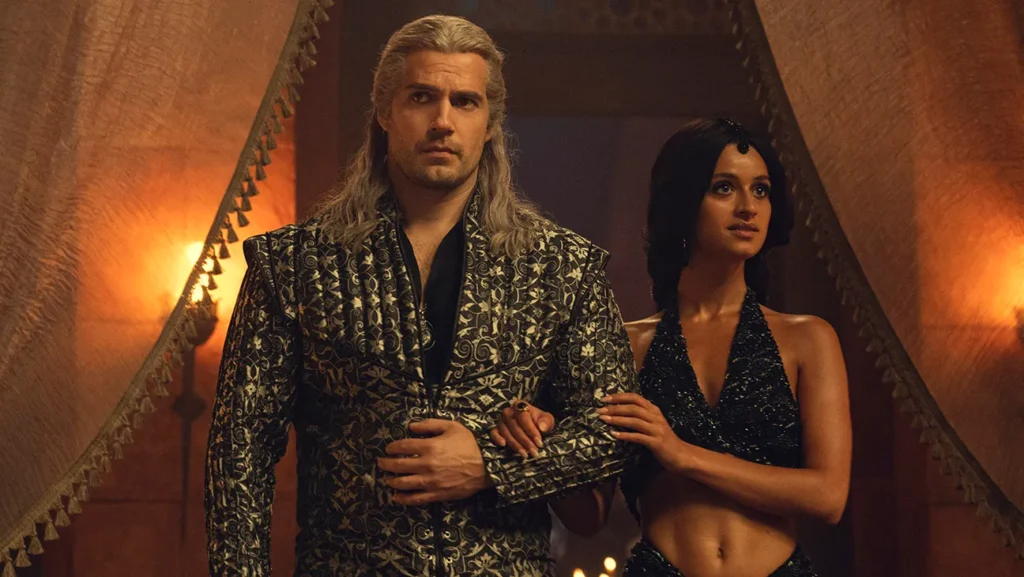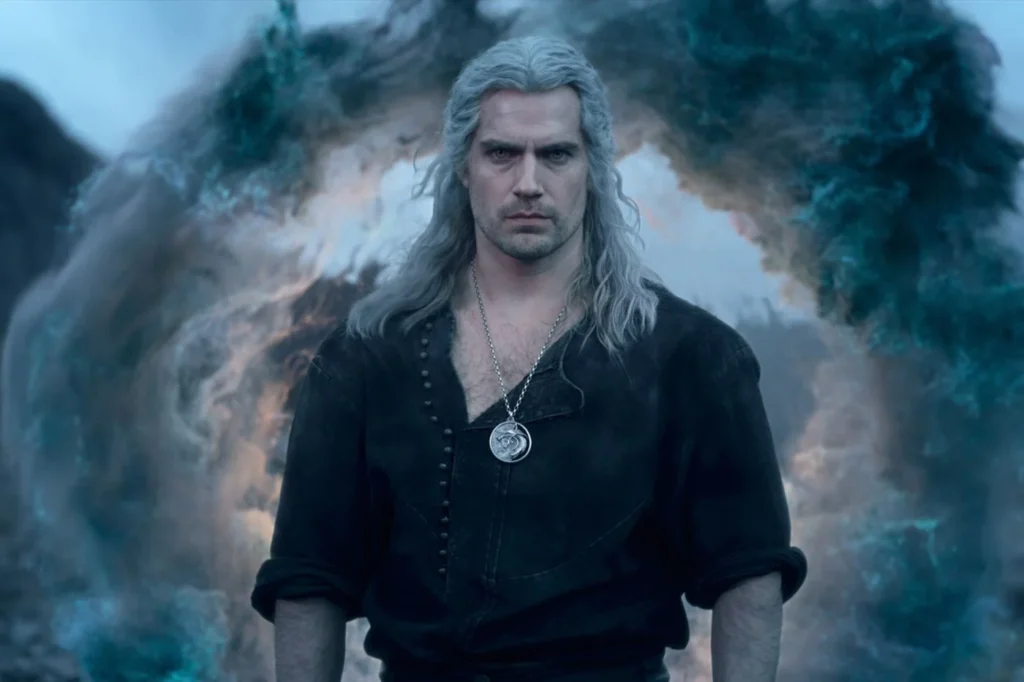The Witcher universe, a mesmerizing blend of myth, magic, and mystery, originates from the mind of renowned Polish author Andrzej Sapkowski. Emerging initially as a series of short stories in the 1980s, Sapkowski’s creation quickly expanded into a critically acclaimed series of novels, riveting readers with its intricate narratives and compelling characters. At its heart lies Geralt of Rivia, a monster hunter with unique abilities and a complex moral compass, navigating through a world riddled with political intrigue, ancient prophecies, and supernatural dangers.
The central storyline of The Witcher revolves around Geralt’s journey and the intertwining destinies he shares with key characters such as the powerful sorceress Yennefer of Vengerberg and the enigmatic young princess Ciri. Each character brings depth to the tale, with their own backstories, motivations, and evolutions that drive the plot forward. The lore of The Witcher is deeply rooted in Slavic mythology, adding layers of authenticity and richness to the narrative. This complex world-building sets the stage for an epic saga that has transcended its original medium.

With the immense popularity of Sapkowski’s books, The Witcher universe has seamlessly transitioned into other forms of media. The video game adaptation by CD Projekt Red further expanded the franchise’s reach, offering players an immersive experience in Geralt’s world through The Witcher game series. These games have been praised for their open-world design, nuanced storytelling, and character development, bringing the intricate details of Sapkowski’s world to life in a highly interactive format.
Most recently, Netflix’s adaptation of The Witcher has catapulted the series to new heights. Bringing the characters and storylines to a global audience, the show has successfully captured the essence of the original works while adding its own unique visual and narrative flair. By blending high-quality production values with a faithful interpretation of the source material, Netflix’s The Witcher has garnered a substantial following, further cementing the series’ place in popular culture.
Together, the books, video games, and TV series create a multifaceted universe that continues to captivate and evolve, drawing new fans into the world of Geralt, Yennefer, and Ciri with each passing iteration. The Witcher’s success across these platforms is a testament to the enduring appeal of Sapkowski’s epic adventures, ensuring that the legacy of this fantastical world will endure for years to come.

The Cast and Characters
The casting decisions for the Netflix adaptation of “The Witcher” have been pivotal in bringing Andrzej Sapkowski’s rich narrative to life. Henry Cavill’s portrayal of Geralt of Rivia stands out due to his deep commitment to embodying the character’s essence. Known for his stoic demeanor and gruff exterior, Cavill’s Geralt is a compelling reflection of the protagonist from the books, blending the character’s physical prowess with a nuanced display of internal conflict and moral fortitude. Fans of the video game series by CD Projekt Red may note the differences in visual design but are likely to appreciate Cavill’s dedication to capturing Geralt’s signature pragmatism and dry wit.
Anya Chalotra’s Yennefer of Vengerberg presents a multifaceted characterization steeped in transformation and complexity. Her performance effectively mirrors Yennefer’s arc from the books, showcasing a profound evolution from a physically flawed and insecure sorceress to a powerful and independent enchantress. Chalotra’s portrayal taps into the emotional depth and fierce independence that define Yennefer, offering a rendition that resonates strongly with both book enthusiasts and video game aficionados.




Freya Allan, as Ciri, captures the innocence and raw potential that mark the character’s crucial formation in the series. Her depiction of Ciri’s growth from a sheltered, royal ward to a determined and resilient figure poised to discover her destiny is intricately aligned with Sapkowski’s vision. The series allows for more explicit exploration of Ciri’s trials and growth, a narrative thread that has been somewhat condensed in the video game adaptation. Allan’s performance is a fresh yet faithful adaptation promising viewers a Ciri that is as fierce and formidable as she is vulnerable and relatable.
Overall, the principal cast of “The Witcher” series successfully bridges the gap between Sapkowski’s original literary creations and their visual incarnations. The meticulous attention to character development, emotional depth, and faithfulness to the source material provides a cohesive and immersive experience for audiences familiar with both the books and the video games.
Plot and Pacing
The narrative structure of “The Witcher” TV series adopts a bold storytelling approach characterized by its nonlinear timeline. This method diverges from the more straightforward progression seen in both the original novels and the video games. Showrunners interweave various timelines, threads of past and present, to craft a complex tapestry that gradually converges in the latter half of the first season. While this creative choice enhances the mystery and depth of the show’s lore, it has received mixed reactions from viewers, particularly those unfamiliar with the source material.
In contrast, the novels by Andrzej Sapkowski are lauded for their fluid storytelling. Each book, despite introduced timelines, strives for coherence, thereby helping readers to immerse deeply into the world of Geralt of Rivia. Similarly, the video game series by CD Projekt Red employs a linear plot that progressively unfolds through player decisions and actions, fostering an engaging and continuous narrative experience.

The TV series places significant emphasis on balancing action, drama, and character development. Episodes frequently shift between intense combat scenes, political intrigue, and personal moments, contributing to a dynamic yet sometimes uneven pacing. Key characters like Geralt, Yennefer, and Ciri are fleshed out through their various arcs, though the nonlinear structure occasionally impacts the continuity of their development. Despite this, the series effectively captures the essence of the Witcher world, drawing viewers into its richly detailed universe.
Overall, while the TV series’ nonlinear narrative presents a unique storytelling challenge, it ultimately succeeds in delivering a multidimensional tale. Those familiar with “The Witcher” franchise may appreciate the deeper, layered approach, whereas new audiences might find it slightly disorienting initially. Balancing epic action sequences with intricate character moments, “The Witcher” TV series offers an immersive experience that pays homage to its roots while carving its own path.
Visuals and Special Effects
The visual aesthetics of “The Witcher” TV series play a crucial role in bringing the fantastical world of The Continent to life. Netflix has invested considerably in set design, costumes, and special effects to ensure an immersive viewing experience. The series employs a blend of practical and CGI effects, creating a seamless mixture that enhances both the realism and the fantasy elements of the show.
The set designs in the series are meticulously crafted, reflecting the medieval architecture and varied landscapes described in Andrzej Sapkowski’s books. From the ancient forests and bustling markets to the grandeur of castles like Cintra and Kaer Morhen, each location is brought to life with remarkable attention to detail, enriching the overall narrative.

Special attention is given to the costumes, which are designed to mirror the distinct cultures and classes within the story. Geralt’s iconic armor and Yennefer’s elegant gowns are just as memorable as the descriptions found in the novels and the detailed designs in the video games. The costuming contributes to character development, allowing viewers to visually differentiate between various factions and social statuses.
When it comes to special effects, the series does not disappoint. The magical battles, monster encounters, and other supernatural occurrences are depicted with impressive visual fidelity. These effects are vital in maintaining the fantastical essence that is a hallmark of both the books and the games. The CGI-rendered creatures, from dragons to djinns, stand out not only for their scale but also for their intricate designs and fluid animations.
Cinematographically, “The Witcher” employs varied camera techniques and color palettes to evoke different moods and atmospheres. The transitions between scenes are smooth, and the use of visual effects to blend folklore with reality is executed with finesse. This alignment of visual storytelling with narrative elements offers a cohesive experience that remains true to the essence of The Witcher universe. In comparing the Netflix series to the books and video games, it is evident that significant effort has been made to preserve the fantastical and darkly enchanting world of The Witcher.


Music and Sound Design
The music and sound design of The Witcher TV series play crucial roles in enhancing the atmospheric depth and emotional engagement of the show. Composed by Sonya Belousova and Giona Ostinelli, the series’ score has garnered critical acclaim for its rich orchestration and memorable motifs. The music complements the narrative, punctuating moments of triumph, tension, and sorrow with an intensity that draws viewers deeper into the world of Geralt of Rivia.
Belousova and Ostinelli’s compositions are characterized by their use of traditional instruments such as the hurdy-gurdy and the lute, which evoke the nostalgic and medieval setting of the story. Noteworthy tracks like “Toss a Coin to Your Witcher” have transcended the series, gaining popularity on streaming platforms and becoming a cultural phenomenon in their own right.
When comparing the TV series to the video games, particularly the work of Marcin Przybyłowicz for The Witcher 3: Wild Hunt, fans will find both similarities and distinct differences. Przybyłowicz’s score is iconic within the gaming community, celebrated for its atmospheric and richly textured compositions that effectively immerse players in the game’s expansive world. His use of Slavic folk music elements provides a unique aural landscape that is deeply intertwined with the lore and setting of the game.
While the TV series’ soundtrack maintains a certain fidelity to the source material with its thematic elements, it brings a cinematic quality that is more pronounced than its video game counterpart. This transition from game to screen required a different approach to sound design, one that embraces the need for a more dynamic and immediate emotional impact suitable for a television audience.
Equally important to the ambiance is the meticulous sound design of the series. The clashing of swords, the growls of mythical beasts, and the subtle whispers in darkened forests all contribute to the immersive experience. The sound effects are expertly balanced with the musical score, ensuring that every scene resonates with authenticity and a palpable sense of place.

Faithfulness to The Book Series
In examining the faithfulness of the Netflix series “The Witcher” to Andrzej Sapkowski’s original novels, several notable deviations, additions, and omissions become immediately apparent. The series creators have endeavored to remain true to the foundational elements of the source material, but certain adaptations were inevitable in translating the complexities of the books into a visual medium.
One significant area of divergence lies in the sequencing and structure of the narrative. While Sapkowski’s novels often employ a non-linear storytelling approach, the Netflix adaptation has adopted a multi-timeline structure in the first season, which has garnered a mixed reception. Some fans appreciate the novel approach to storytelling, enjoying the intricate interplay between timelines, while others find it confusing and disjointed compared to the chronological narratives of the books.
Additional characters and expanded storylines represent another deviation from the source material. For example, the character of Yennefer receives a substantially developed backstory that is only briefly touched upon in the novels. This expansion serves to enrich the character development, providing audiences with a deeper understanding of her motivations and complexities. However, this addition has sparked debate among purists who argue that such expansions, while enriching, might gradually alter the essence of the original narrative.
Omissions are also notable, particularly in the instances of certain side plots and minor characters, which have either been condensed or excluded altogether. These omissions are likely necessitated by the constraints of episodic storytelling but have raised concerns among die-hard fans about the integrity of the beloved universe created by Sapkowski.
Overall, the Netflix adaptation of “The Witcher” has made substantial efforts to honor the essence of Sapkowski’s work. The reception of these changes is a testament to the delicate balance required in adapting beloved literature to screen, where maintaining the core spirit of the source material must be carefully weighed against the demands of contemporary television storytelling.




Comparing the Show, Books, and Game Storylines
The vast universe of “The Witcher” series stretches across different mediums — TV series, books, and video games. Each format encapsulates the central themes of destiny, power, and ethics, but presents them in unique ways. One of the key differences arises from how the intricate story arcs and character developments are fleshed out in these mediums.
The original books, penned by Andrzej Sapkowski, offer a rich tapestry of lore and characters that dive deeply into the concepts of fate and the ethical dilemmas faced by Geralt of Rivia, the protagonist. The narrative is complex and non-linear, presenting a challenging yet rewarding read. The themes of destiny and choice are paramount, evidenced by Geralt’s interactions with Ciri and Yennefer, where their intertwined fates drive the storyline forward. Sapkowski’s prose allows readers to ponder these profound themes gradually, providing depth to every decision and consequence.
In contrast, the TV series, adapted by Lauren Schmidt Hissrich for Netflix, condenses the dense material to fit the episodic format. This necessitates alterations in both the storyline and character arcs. The show’s nonlinear timeline mirrors the book’s complexity but is tailored for visual storytelling, sometimes leading to deviations from the source material. However, it retains the core themes of destiny and power. For example, Geralt’s relationship with Ciri and Yennefer is central to the narrative, exploring their individual growth and the moral ambiguities they face. The visual medium allows for a dramatic portrayal of these themes, though sometimes at the expense of the books’ detailed character development.
The video games, notably the CD Projekt’s “The Witcher III: Wild Hunt,” offer a more expansive adaptation. Here, players step into Geralt’s shoes, making choices that directly impact the storyline and the world around them. This interactive form allows for an immersive experience of the series’ ethical and philosophical themes. The games expand on the lore, introducing new stories and characters while maintaining the essence of the books. The open-world design provides a platform to explore the consequences of power and the intricacies of destiny in a more interactive and personal way.
The approach to storytelling in “The Witcher” varies significantly across these mediums, impacting the overarching experience. Whether through the deep narrative immersion of the books, the visual and emotional engagement of the TV series, or the interactive and exploratory nature of the video games, each medium offers a distinct yet compelling journey into the epic adventures of Geralt and his world.

Final Thoughts and Recommendation
As we draw our analysis to a close, it is imperative to reflect on the multifaceted strengths and weaknesses of The Witcher TV series. One of the series’ most striking strengths is its ability to flesh out a rich, intricate world that visually brings to life the lore and atmosphere found in Andrzej Sapkowski’s books and the beloved video game adaptations. The meticulous attention to detail, from costume design and scenery to the portrayal of magic and combat, conveys a sense of authenticity that aligns with the essence of the original works.
Performance-wise, Henry Cavill’s portrayal of Geralt of Rivia stands out as both a focal point and a significant draw for the series. His commitment to embodying the character authentically is undeniably impressive, capturing Geralt’s stoic demeanor, nuanced complexities, and moral ambiguities. However, some might find the series’ non-linear storytelling approach, especially in its first season, a double-edged sword. While it adds depth and suspense, it can also lead to occasional confusion among viewers, particularly for those unfamiliar with the source materials.
In terms of narrative, the show admirably condenses sprawling lore into a cohesive storyline. Still, it sometimes struggles with pacing and character development. Balancing the demands of adapting short stories alongside an overarching plotline might leave some characters feeling underdeveloped. Yet, the writers’ efforts to stay true to the spirit of Sapkowski’s universe do shine through, providing both fans and newcomers with moments of genuine connection to the source material.
After a thorough evaluation, our recommendation leans favorably towards investing time in The Witcher TV series. For dedicated fans of the books and video games, the series offers additional layers of depth and visual splendor that enrich the overall experience. Simultaneously, newcomers to this fantastical world will find a compelling piece of entertainment, thoughtfully crafted to introduce them to Geralt’s adventures while providing a standalone narrative engaging enough to spur further exploration into the wider Witcher universe.









